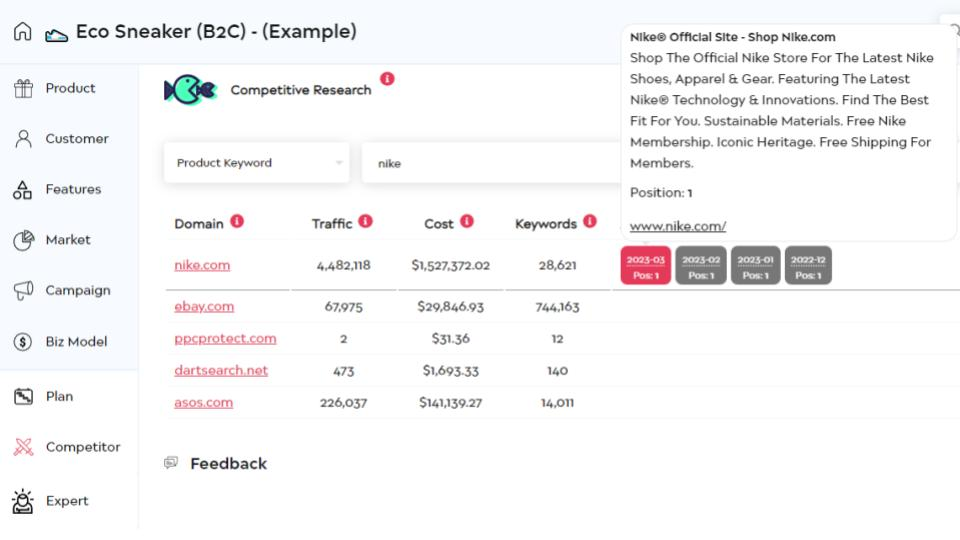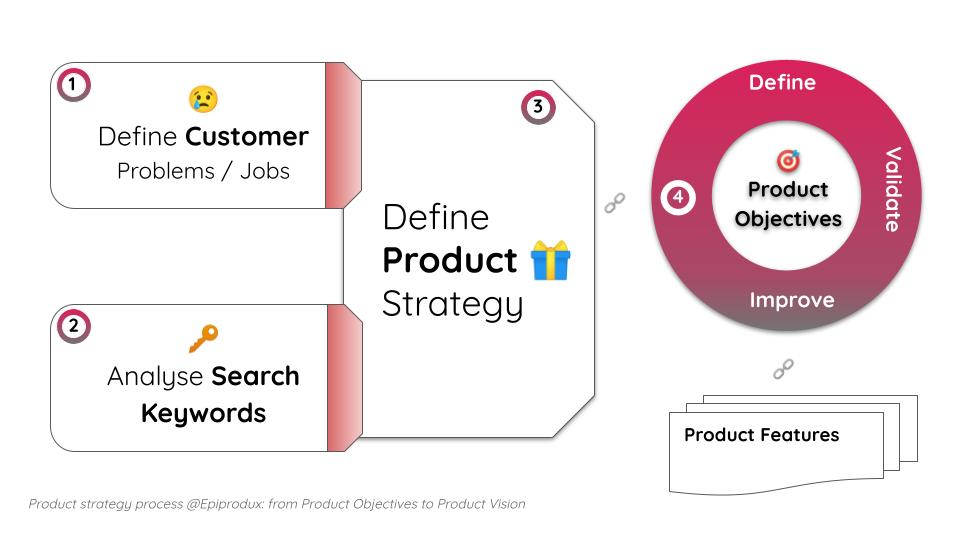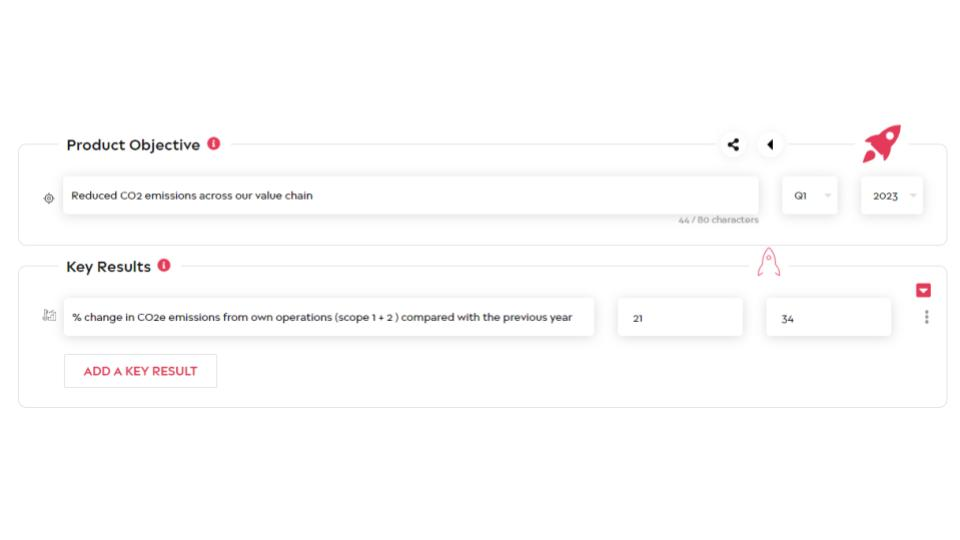Compelling Product Objectives: Achieving Ambitious and Measurable Vision
In today’s competitive business landscape, companies must continually adapt and innovate to maintain their edge. One crucial aspect of driving business success lies in the ability to set compelling product objectives that are both ambitious and measurable. These objectives serve as the foundation for a product’s vision, guiding its development and ensuring that it delivers unique customer experiences, value propositions, and a competitive advantage in the market.

This article will delve into the importance of establishing ambitious and measurable objectives that shape a product’s vision, ultimately propelling a company toward success. By understanding the crucial role that product vision plays in achieving a competitive advantage, organizations can make more informed decisions when setting goals and developing strategies for their products. This knowledge will empower businesses to create products that not only meet the needs of their customers but also stand out from the competition.
The Essence of Product Vision
A product vision is a comprehensive, long-term view of a product that encapsulates its core purpose, target audience, and the key benefits it offers. It serves as a guiding light for product development, informing decision-making, and setting the direction for future growth. Understanding the essence of product vision is crucial in setting product objectives that contribute to a successful and competitive product.
Product Vision Definition and Significance
A product vision is a clear, concise, and inspiring statement that describes the overarching objectives and aspirations for a product. It is a vital component of the product development process, as it sets the stage for decision-making and aligns the efforts of various stakeholders, such as product managers, designers, developers, and marketers. A well-crafted product vision helps to maintain focus and motivation throughout the product lifecycle, ensuring that the final product delivers on its promises and meets customer expectations.
Relationship Between Product Vision and Product Objectives
Product objectives are specific, actionable goals that serve to realize the product vision. These objectives break down the broader vision into measurable and attainable targets, guiding the product development process and ensuring that the team remains aligned and focused on achieving the desired outcomes. In essence, product objectives translate the product vision into actionable steps that can be monitored, assessed, and adjusted as needed.
Elements of a Strong Product Vision
Unique customer experience:
A compelling product vision emphasizes the importance of delivering a distinctive and memorable experience to customers. This can be achieved by understanding and addressing customer needs, preferences, and pain points, ultimately resulting in a product that meets or exceeds their expectations.
Value proposition:
A strong product vision clearly outlines the unique value proposition of the product, highlighting the key benefits and features that differentiate it from competitors. This value proposition should be compelling and easily understood, making it simple for customers to see why they should choose your product over alternatives in the market.
Competitive advantage:
A successful product vision and product objectives also consider the competitive landscape, identifying opportunities to gain an edge over competitors. This could involve leveraging innovative technologies, streamlining processes, or creating a strong brand reputation that sets your product apart from the rest. By focusing on these competitive advantages, your product vision along with product objectives will inspire the development of a product that stands out in the market and captures the interest of your target audience.

Image: Competitive Analysis (ads copy text) in Product Strategy and Objectives Creation
Setting Ambitious and Measurable Product Objectives
To bring a product vision to life, organizations must establish product objectives that are ambitious, pushing the boundaries of innovation while remaining realistic and measurable. This ensures that the product development process remains focused and results-driven, ultimately leading to a successful and competitive product.
Utilizing the SMART criteria
The SMART criteria provide a framework for setting effective product objectives, ensuring that they are:
- Specific: Clearly define the desired outcome, outlining what needs to be achieved and why it is important. This helps the product team maintain focus and understand the purpose of each objective.
- Measurable: Establish quantifiable indicators or metrics that can be used to track progress and assess the success of each objective. This enables data-driven decision-making and helps identify areas for improvement.
- Achievable: Ensure that the objectives are realistic and attainable, given the available resources, constraints, and market conditions. This prevents setting overly ambitious goals that can lead to disappointment or failure.
- Relevant: Align the objectives with the overall business goals and product vision, ensuring that they contribute to the success of the organization and the product.
- Time-bound: Set deadlines for achieving the objectives, providing a sense of urgency and encouraging accountability within the product team.
Assessing Market Opportunities and Challenges
Before setting product objectives, it is essential to thoroughly assess the market landscape, identifying opportunities for differentiation and potential challenges that may arise. This involves analyzing competitors, market trends, and customer needs, allowing organizations to make informed decisions when setting ambitious and measurable objectives.
Encouraging Innovation and Creativity
Innovation and creativity are essential to developing a competitive product. Encourage a culture of experimentation and learning within the product team, providing the necessary resources and support for exploring new ideas and solutions. This fosters an environment where ambitious objectives can be pursued while remaining flexible and adaptable to the ever-changing market.
Aligning Objectives with Organizational Resources
To ensure that product objectives are realistic and achievable, they must be aligned with the organization’s available resources, including financial, human, and technological assets. By taking stock of these resources and setting priorities based on their allocation, organizations can pursue ambitious objectives while mitigating the risk of overstretching their capabilities.
Developing a Comprehensive Product Strategy
With ambitious and measurable product objectives in place, the next step is to develop a comprehensive product strategy that outlines the steps necessary to achieve those objectives. This strategy should encompass market research, a product roadmap, cross-functional collaboration, and agile methodologies.
Conducting Market Research
Market research is crucial to understanding the needs, preferences, and pain points of your target audience. This information will inform the development of your product, ensuring that it addresses the needs of your customers and provides a unique value proposition. Market research methods may include customer surveys, focus groups, and competitive analysis. By continuously gathering and analyzing market insights, organizations can make data-driven decisions and adapt their product strategy as needed.

Image: Market Research to Define Compelling Product Strategy, Vision, and Objectives.
Creating a Product Roadmap
A product roadmap is a visual representation of the product development process, outlining the milestones, timelines, and objectives that need to be achieved. It serves as a communication tool, ensuring that all stakeholders are aligned and aware of the expectations and progress. When creating a product roadmap, consider the following:
- Define milestones and timelines: Break down the product objectives into smaller, actionable steps with clear deadlines. This helps the team stay on track and monitor progress.
- Allocate resources and assign responsibilities: Ensure that each objective has the necessary resources and a dedicated team member responsible for its completion. This promotes accountability and ensures that objectives are given the attention they deserve.
Building a Cross-functional Product Team
A cross-functional product team consists of individuals with diverse skills and expertise, such as product managers, designers, developers, and marketers. This collaborative approach allows for a more holistic view of the product development process, ensuring that all aspects are considered and optimized. Encourage open communication and collaboration within the team to foster creativity and innovation, ultimately leading to a more competitive and successful product.
Implementing Agile Methodologies
Agile methodologies, such as Scrum and Kanban, can help organizations adapt to changing market conditions and customer needs more effectively. These methodologies prioritize flexibility and iterative development, enabling the product team to adjust their objectives and strategies based on real-time feedback and data. By embracing agile practices, organizations can increase the likelihood of achieving their ambitious and measurable product objectives, while also responding quickly to changes in the market or customer expectations.
Monitoring and Adapting Product Objectives
As the product development process unfolds, it’s essential to monitor and adapt product objectives to ensure they remain relevant, achievable, and aligned with customer needs. This involves establishing key performance indicators (KPIs), regularly reviewing progress, utilizing customer feedback, and embracing a continuous improvement mindset.
Establishing Key Performance Indicators (KPIs)
KPIs are quantifiable metrics used to evaluate the success of product objectives and the overall performance of the product. By selecting relevant KPIs, organizations can track progress, identify trends, and make data-driven decisions. Examples of KPIs may include customer satisfaction scores, revenue growth, or user engagement metrics. Ensure that these indicators are aligned with the product objectives and provide actionable insights to drive improvement.
Regularly Reviewing Progress
Periodic progress reviews are essential to monitor the success of product objectives and make adjustments as needed. This involves analyzing the data collected through KPIs and other metrics, and identifying successes and areas for improvement. Regular reviews enable the product team to stay on track, adapt to changing market conditions, and maintain focus on achieving the product vision.
Utilizing Customer Feedback
Customer feedback is a valuable source of information for refining product objectives and ensuring they remain aligned with customer needs. Implement feedback loops, such as user testing, customer surveys, or social media monitoring, to gather insights and identify opportunities for improvement. Use this feedback to adapt the product objectives, making sure they continue to reflect customer expectations and deliver unique value.
Embracing Continuous Improvement
In today’s rapidly evolving market, a commitment to continuous improvement is crucial for achieving ambitious and measurable product objectives. Encourage a growth mindset within the product team, fostering a culture that values learning, experimentation, and adaptation. By embracing continuous improvement, organizations can stay ahead of the competition and consistently deliver products that exceed customer expectations.
Case Studies: Successful Implementation of Ambitious and Measurable Objectives
To illustrate the power of setting ambitious and measurable product objectives, we will explore three case studies from different industries. These examples demonstrate how organizations can achieve success by implementing strategic objectives that drive innovation and deliver unique value to their customers.
Example Case Study 1: A Tech Company Improving User Experience
A technology company specializing in productivity software recognized a gap in the market for a tool that revolutionized the way project managers create project plans. They aimed to develop an AI-powered solution that would enable project managers to create detailed and high-quality project plans automatically, significantly reducing the time and effort required in traditional planning processes. The company set ambitious product objectives based on this vision:
- Develop a user-friendly, AI-driven platform: The primary objective was to create an intuitive platform that leveraged artificial intelligence to generate comprehensive project plans tailored to the unique requirements of each project.
- Improve the quality and detail of project plans: The software needed to produce project plans that were more detailed and of higher quality than those created using traditional methods, ensuring that all aspects of the project were thoroughly considered and addressed.
- Reduce the time and effort required for project planning: The solution aimed to minimize the time and effort project managers spent on creating project plans, allowing them to focus on other crucial aspects of project management, such as team coordination and resource allocation.
- Foster continuous improvement through user feedback: The company planned to regularly gather user feedback and monitor KPIs, such as project success rates and user satisfaction, to fine-tune the AI algorithms and further enhance the platform’s capabilities.
By setting ambitious and measurable objectives, the technology company successfully developed innovative productivity software that disrupted the user experience in project management. The AI-powered solution enabled project managers to create detailed, high-quality project plans in a fraction of the time required using traditional methods, ultimately driving greater efficiency and success in project management.
Example Case Study 2: A Consumer Goods Company Increasing Market Share
A consumer goods company aimed to increase its market share by offering a new line of eco-friendly products that catered to environmentally conscious customers. Their ambitious objectives included sourcing sustainable materials, reducing their carbon footprint, and creating effective marketing campaigns to raise awareness of their green initiatives. By tracking KPIs such as sales growth and customer sentiment, the company successfully expanded its customer base and gained a competitive edge in the market.

Example Case Study 3: A Startup Disrupting an Established Industry
A startup in the financial services industry aimed to disrupt the traditional banking sector by offering a mobile-first banking experience with lower fees and improved customer service. Their ambitious product objectives focused on delivering a seamless user experience, leveraging innovative technologies, and creating a strong brand reputation. The startup monitored KPIs such as customer acquisition, retention, and satisfaction to fine-tune its product offerings and adapt its strategy. As a result, they quickly gained a significant share of the market and established themselves as a major player in the industry.
These case studies demonstrate the power of setting ambitious and measurable product objectives in driving innovation, customer satisfaction, and business success. By embracing this approach, organizations across various industries can develop competitive products that meet the needs of their customers and stand out in the market.
Conclusion
In today’s competitive business environment, setting compelling product objectives that are both ambitious and measurable is crucial to achieving a successful and competitive product. These objectives, which form the foundation of a product’s vision, guide its development and ensure it delivers unique customer experiences, value propositions, and a competitive advantage in the market.
To set effective product objectives, organizations must understand the essence of product vision, utilize the SMART criteria, assess market opportunities and challenges, and align objectives with organizational resources. Developing a comprehensive product strategy, monitoring and adapting product objectives, and learning from successful case studies can help businesses transform their ambitious product objectives into reality.
By embracing this approach, organizations can create innovative products that not only meet the needs of their customers but also stand out from the competition. This ultimately leads to long-term success, increased market share, and a stronger brand reputation, all of which are essential ingredients in today’s fast-paced and ever-changing business landscape.
How AI-based tool EpiProdux Helps to Define Compelling Product Objectives
EpiProdux is a solution that can help organizations define compelling product objectives by streamlining the product planning process, providing valuable insights, and fostering collaboration across teams. Here’s how EpiProdux can facilitate the process of defining ambitious and measurable product objectives:
- Comprehensive market research: EpiProdux can gather relevant data on market trends, competitors, and customer preferences, providing a strong foundation for setting informed and strategic product objectives. This research can help organizations identify opportunities for differentiation and set objectives that align with customer needs.
- Integrated goal-setting: EpiProdux can offer a goal-setting module that follows the SMART criteria, guiding product teams to create specific, measurable, achievable, relevant, and time-bound objectives. By leveraging this module, teams can ensure that their product objectives are well-defined and actionable.
- Cross-functional collaboration: The platform can facilitate seamless communication and collaboration among cross-functional teams, ensuring that product objectives are aligned with the expertise and insights of various stakeholders. This collaboration can lead to more informed and effective product objectives.
- Data-driven decision-making: EpiProdux can provide organizations with real-time data and analytics, enabling them to monitor key performance indicators (KPIs) and track progress towards achieving their product objectives. This data-driven approach can help organizations adapt and refine their objectives as needed, ensuring that they remain relevant and achievable.
- Integration with agile methodologies: EpiProdux can support agile methodologies, which prioritize flexibility and iterative development. By incorporating these methodologies, product teams can adapt their objectives and strategies based on real-time feedback and insights, increasing the likelihood of achieving their ambitious and measurable product objectives.
- Continuous improvement: EpiProdux can facilitate a culture of continuous improvement by providing tools for capturing customer feedback, analyzing performance metrics, and identifying areas for growth. This approach can help organizations refine their product objectives and ensure they remain aligned with evolving customer expectations and market trends.
In summary, EpiProdux can provide organizations with the tools and insights necessary to define compelling product objectives that drive innovation, competitiveness, and success. By leveraging its market research, goal-setting, collaboration, data-driven decision-making, agile methodologies, and continuous improvement capabilities, EpiProdux can help organizations develop ambitious and measurable objectives that ultimately lead to successful products.


